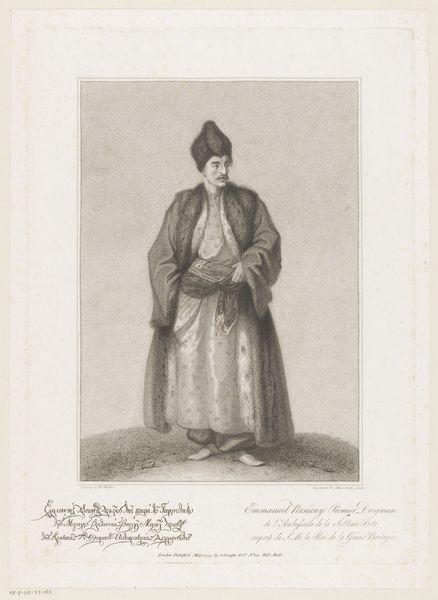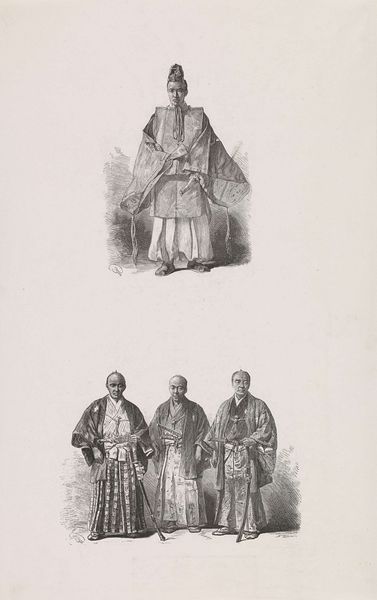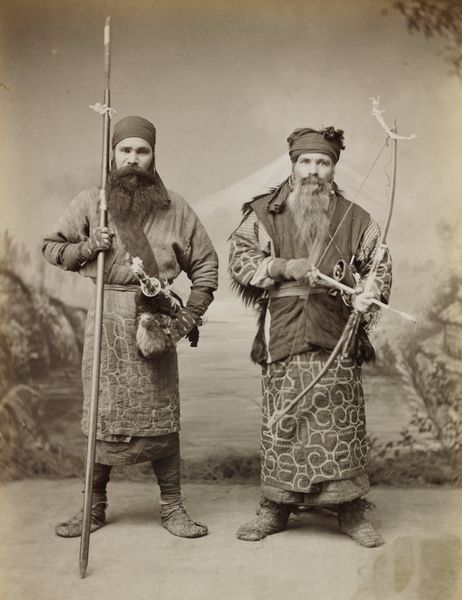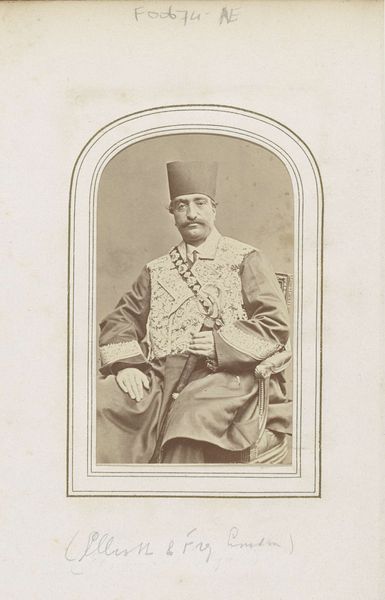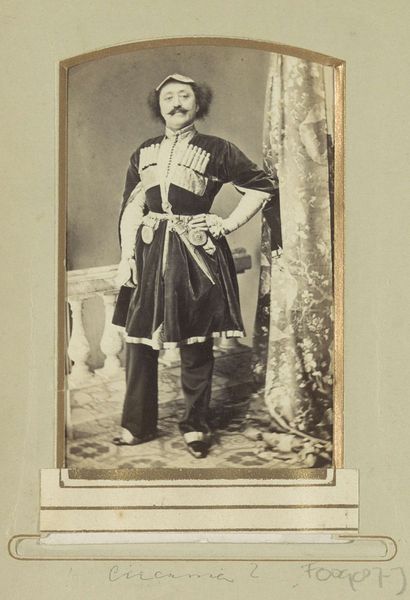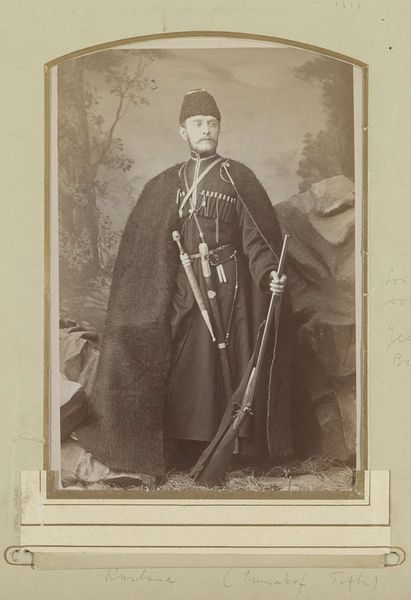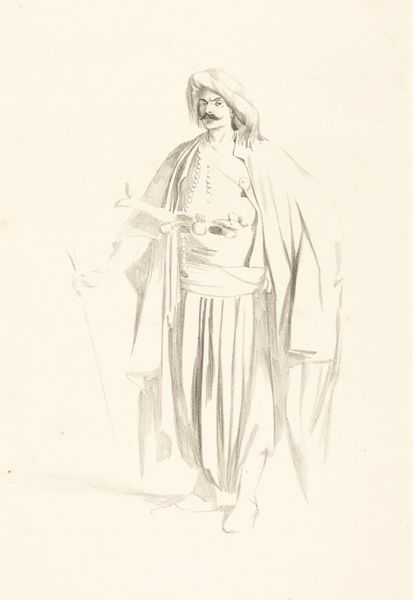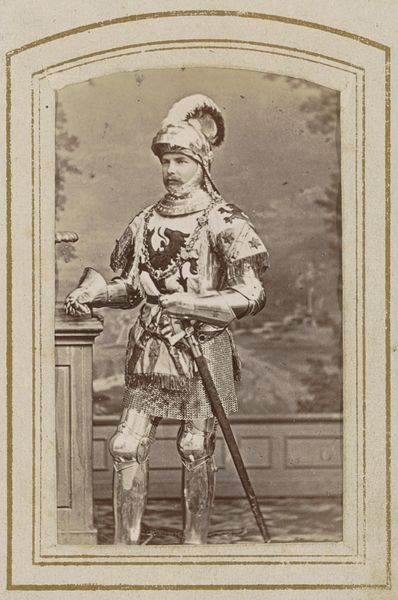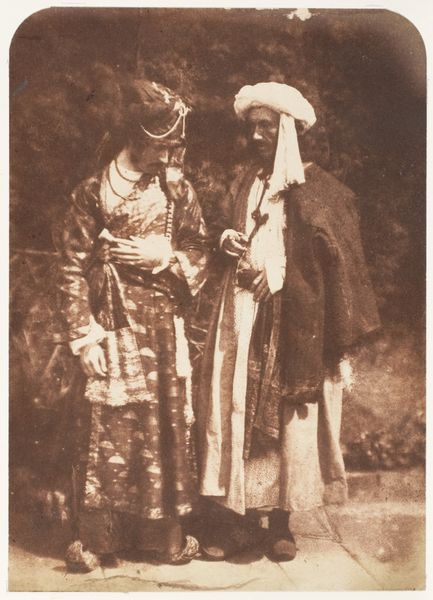
Portret van twee onbekende bewakers van het Franse consulaat, Syrië c. 1867 - 1877
0:00
0:00
photography, gelatin-silver-print, albumen-print
#
portrait
#
16_19th-century
#
archive photography
#
photography
#
historical photography
#
orientalism
#
gelatin-silver-print
#
19th century
#
albumen-print
Dimensions: height 278 mm, width 214 mm, height 558 mm, width 469 mm
Copyright: Rijks Museum: Open Domain
Curator: What an intriguing find from the Rijksmuseum's collection! This albumen print, crafted by F\u00e9lix Bonfils sometime between 1867 and 1877, is entitled "Portret van twee onbekende bewakers van het Franse consulaat, Syri\u00eb"—Portrait of two unknown guards of the French consulate, Syria. Editor: Immediately striking, isn’t it? The symmetry of the figures and the formality of their pose... it creates a sense of dignified, almost theatrical stillness. Their traditional garb, though, that seems so meticulously captured! Curator: Absolutely. Let's unpack some of that context. Bonfils was a key figure in the Orientalist photography movement. He aimed to document the Middle East for a Western audience, yet such works can be examined under a critical lens; issues arise when framing representations through the lens of power and colonial dynamics, essentially shaping how the West perceives the East. Editor: And you see this play out in their attire—these ornately decorated vests paired with jambiyas... Weapons, of course, are classic symbols of power and masculinity. Do these weapons signify more than just the protection of a consulate? Curator: Perhaps. Consider that Bonfils positioned these men next to the consulate, and it prompts contemplation about who is being represented, how they are being framed within geopolitical dynamics and cultural identities in his visual narrative. Who truly were they in Syria's complex sociopolitical sphere at that time? Editor: Right, they’re not merely guards. They’re embodying something for the European gaze—the exotic other, maybe. But there’s a pride, a strength radiating from their stances. Despite the colonial lens, their cultural identity still perseveres powerfully in this tableau. Curator: And this is why revisiting and reassessing such art becomes necessary—unpacking assumptions and colonial-era imprints while striving to respect intrinsic value remains paramount when encountering historical portraiture from that time. Editor: Precisely! These kinds of nuanced visual dialogues push us past initial encounters into thoughtful examinations around identity, presentation, power, representation. Curator: A poignant illustration on engaging consciously, it encourages broader dialogues while analyzing historic documentation during the height of imperialism and portraiture conventions for that age.
Comments
No comments
Be the first to comment and join the conversation on the ultimate creative platform.
